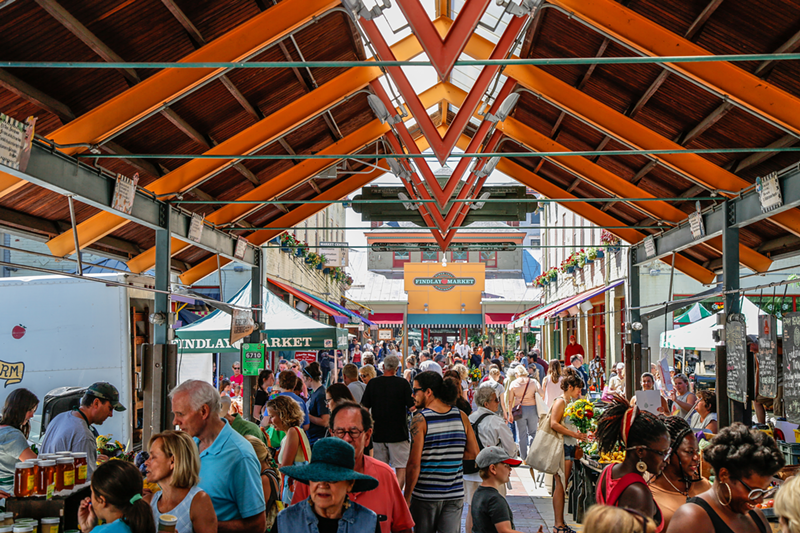It seems as though Cincinnati's history, charm and rapid growth are catching people's attention across the nation lately. And, after a recent blog on June 3 which highlighted many of Cincinnati's museums and other iconic destinations, Forbes magazine just gave the Queen City another shout-out.
This article, written by contributor John Oseid, takes a look at Cincinnati's rich history, specifically in Over-the-Rhine, and how it has blossomed back to life.
Oseid recognizes Findlay Market, which was just named one of the 10 best markets in the world by Newsweek magazine, mentioning Taste of Belgium, Ecklerlin Meats, Dean's Mediterranean Imports and other stops found via a tour by Cincinnati Food Tours.
"Supported by a 19th-century cast- and wrought-iron frame, which deservedly earns it a spot on the National Register of Historic Places, Findlay Market is an OTR landmark to which many visitors make a beeline," he writes.
He also dives into the history of local pottery company Rookwood Pottery and how much it has contributed to the iconic buildings throughout the city, highlighting the Union Terminal Tea Room in which Graeter's is now located, Taft's Ale House, Carew Tower and more.
Oseid also mentions hip bars and restaurants including Sundry and Vice and Please, and highlights our plentiful murals, with a nod to artist Jason Snell's "Ezzard Charles: The Cincinnati Cobra" mural and Jenny Ustick's "Mr. Dynamite" mural.
In addition to commenting on many of Cincinnati's celebrated landmarks, Oseid also takes a moment to consider Cincinnati's troubled past, contributions by 3CDC and gentrification.
"For all the new cultural and culinary affairs, OTR's uptick was a long time coming.The killing of an unarmed young black man in 2001 led to civil disorder that slowed development, and by as recently as a decade ago the community's population had dwindled to a few thousand people, a tiny fraction of its original. Even today, one still sees rows of buildings in dire need of restoration," he writes. "Yet, as in every city where gentrification takes place there are inevitable challenges and debate over the repercussions for lower income residents, the loss of mom-and-pop stores and a decline in ethnic minority representation."
He then circles back around to OTR's past as a German enclave, discussing our brewing history, American Legacy Tours, lagering cellars and more.
All in all, he calls out major features and points of interest, as well as some local gems, for anyone interested in visiting.


